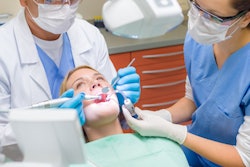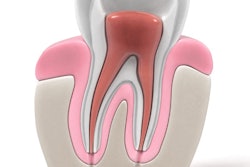
Rising levels of chronic disease, a workforce increasingly plagued by ill health, and skyrocketing medical costs -- these are just some of the health trends to watch in the next decade, according to a commentary in the January edition of the Journal of the American Dental Association.
In an editorial letter, JADA Editor Michael Glick, DMD, explored emerging health trends that dentists should be aware of at the start of the new decade and how dentists can positively respond to those trends. He particularly focused on data affecting the millennial generation, who now constitute the largest generational cohort in the U.S.
"The expected deteriorating health of aging millennials can have major economic consequences, including reducing per capita income, increasing unemployment rates, and slowing economic growth," wrote Dr. Glick, who is also a professor at the University at Buffalo School of Dental Medicine (JADA, January 2020, Vol. 151:1, pp. 1-3). "This expected economic trend may have direct health implications, such as increased incidence of depression, other mood disorders, and even suicides owing to financial hardship."
The millennial generation is typically defined as those born between 1981 and 1996, making them between the ages of 24 and 39 in 2020. In addition to being the largest generational cohort in the U.S., they are also the most represented generation in the workforce. They're also sicker than previous generations, according to new data.
While deaths from major diseases such as cancer and diabetes are down, so-called deaths of despair are on the rise. Between 1970 and 2017, the death rate from unintentional injuries increased by 81%, and death by suicide rose from being the fifth most common cause of death in 1980 to the second most common cause of death in 2017. Deaths due to unintentional injuries and accidents, including overdose deaths, also have increased in the past decade.
In addition, the U.S. Centers for Disease Control and Prevention has noticed a rise in chronic diseases, which includes tooth decay, heart disease, and diabetes. This trend is likely to continue into the next decade.
"The increase in chronic conditions among millennials compared with past generations does not bode well," Dr. Glick wrote. "It is estimated that 60% of adult Americans in 2014 had at least one chronic condition, 42% have more than one, and 12% have more than five."
Healthcare spending also is expected to continue rising in 2020 and beyond. Health expenditures increased by 155% from 2000 to 2017, Dr. Glick reported. In addition, chronic and mental health conditions accounted for about 90% of the $3.5 trillion the U.S. spends annually on healthcare.
While the plight of Americans may seem insurmountable, oral healthcare professionals can have a positive effect on these trends. Dr. Glick noted that dentists and other team members are trained to address tooth decay, one of the most common causes of chronic disease worldwide.
Furthermore, dentists see the majority of the U.S. population every year. Dental teams are well poised to counsel patients about other, nondental chronic diseases, including obesity and hypertension. In doing so, dental teams can positively affect their patients' overall health and well-being.
"Oral diseases are the most prevalent chronic conditions in the world today, affecting populations throughout the life span," Dr. Glick wrote. "Doing what we are trained to do, prevent and treat oral diseases, may have a significant impact on people's lives."



















